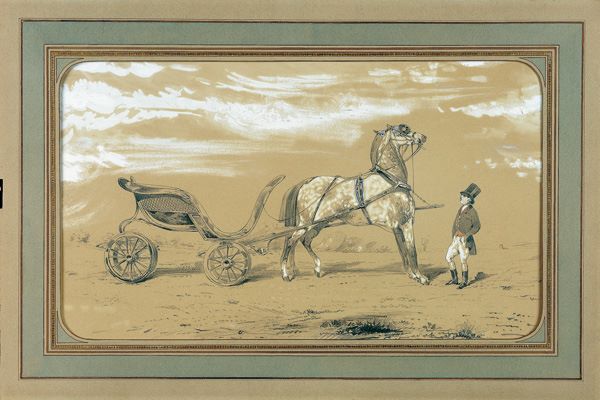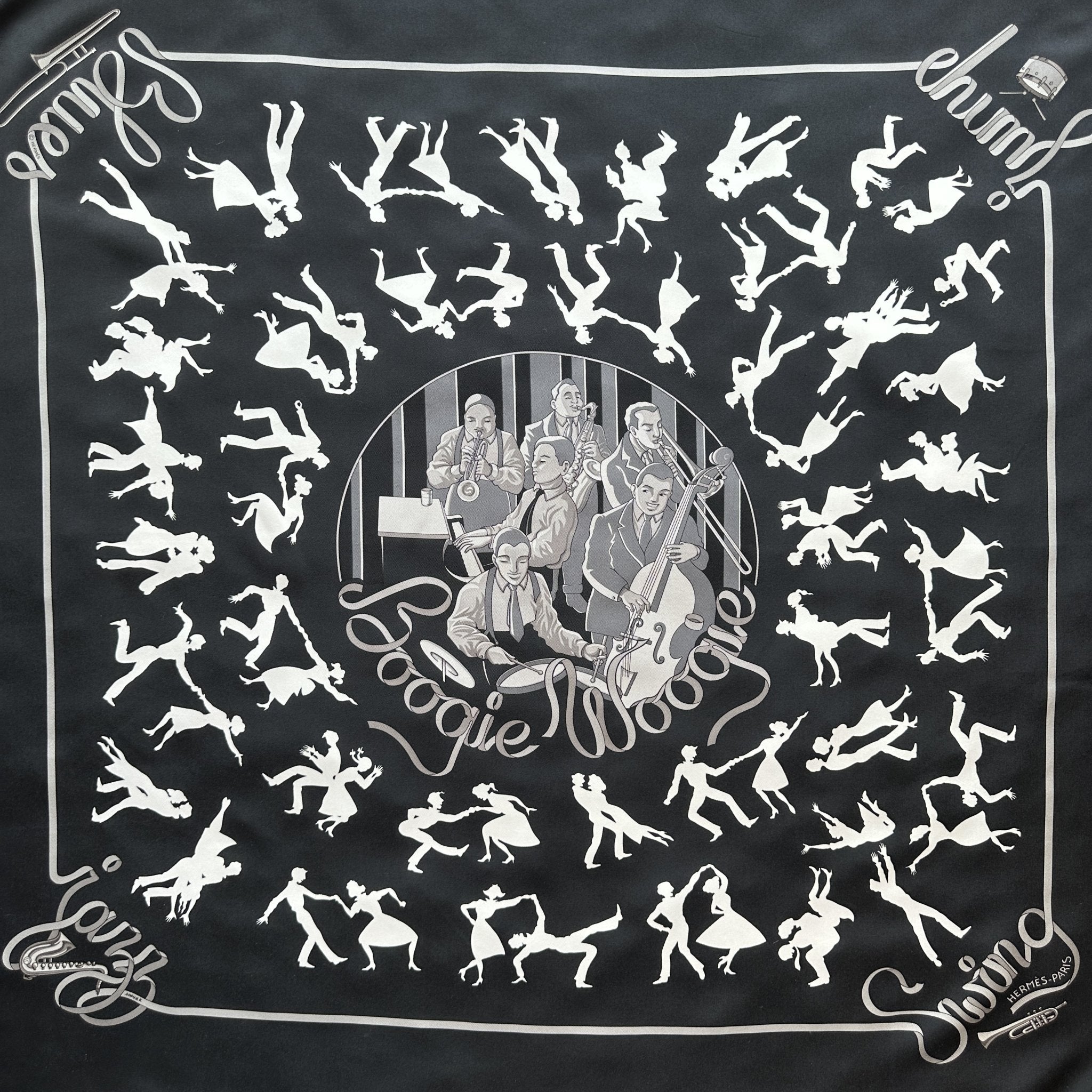
The Duke Attelé by Alfred de Dreux - History of the Hermès logo
The ''carriage'' from which the contemporary logo of the Hermès brand comes is in reality a Petit-Duc.
This horse-drawn carriage resembling the 4-wheel Cabriolet is open, has a removable hood and can be driven from the inside by its owner. It also exists in a larger version logically called Grand-Duc.
In 1945, while looking for a logo, Émile-Maurice Hermès set his eyes on a graphite drawing enhanced with gouache which decorated his office. This ''Duke harnessed and groom waiting'' signed Alfred de Dreux perfectly symbolizes the characteristics dear to the brand. In addition to the reference to horses and travel, we find the distinction and refinement of the object but also the elegance in the service.
In addition, Émile-Maurice Hermès has been using it as an ex-libris for 22 years.
The artist who created it Pierre-Alfred Dedreux known as Alfred de Dreux is one of the most famous animal painters of the 19th Century. Born in 1810, he was the son of an architect who won the Prix de Rome in 1815. He was just 13 years old when he studied painting with Théodore Géricault , the best friend of his paternal uncle who was also a painter. . His first large canvas in 1825 was, in homage to his master, a copy of his Mazeppa .
In 1832 he created a first equestrian portrait of the Duke of Orléans, son of Louis-Philippe I, King of the French. He became close to the royal family, whom he accompanied on official trips to England where, highly appreciated by the English aristocracy, his equestrian portraits allowed him to build up a loyal clientele.
Following this trip, Alfred de Dreux made numerous stays in Great Britain until his death. He also accompanied the king in Surrey in his exile in 1848.
Returning to France in 1852, his talent for representing horses and riders allowed him to create equestrian portraits of the imperial family and Emperor Napoleon III , who considered him one of the most gifted painters among servants. of Imperial Glory and named him Knight of the Legion of Honor in 1857.
His death in March 1860 at the age of 49 gave birth to a legend, which even his great-nephew recorded 100 years later in a book, according to which he was killed in a duel by General Count Émile Félix Fleury, aide-de-camp of the emperor. In reality, and as attested by a letter dated July 1860 from his youngest sister to Georges Géricault, the natural son of his brother's former master, Alfred de Dreux died of a common liver abscess from which he suffered. since a long time.
The Hermès house, however, allowed Alfred de Dreux to enter the legend by the use of his Duc Attelé as a logo, but also by entrusting Zoé Pauwels , in 1992, with the creation of a Carré in his name: " Alfred De Dreux horse painter" .

BLOG

Sophie Koechlin : l’âme jazz d’un carré Hermès
Chez Carré Society, nous aimons raconter les histoires derrière la soie. Les histoires de celles et ceux qui, un jour, ont tenu un pinceau pour Hermès. Parmi eux, Sophie Koechlin occupe une place à...
Read more
Collectionner les foulards Hermès : "Les cantinières en 1860" - 1953
Pour dessiner ce Carré Hermès qui date de 1953, J.B. Jannot s’est très certainement inspiré d’une collection de gravures colorées de 1859 réalisée par l'artiste français Hippolyte Lalaisse..
Read more